2016 was supposed to be the year of the chatbot. But while the number of companies building chatbots has exploded, chatbots themselves haven’t really lived up to the hype. As venture capitalist, Fred Wilson wrote, “I would be hard pressed to name a super popular chatbot on Messenger, Kik, Slack, and Telegram.”
The problem is that a lot of chatbots just aren’t advanced enough to replace your existing support or sales functions. They’re good at one thing—checking the weather, or booking a flight. And even then, they often don’t actually make life easier.
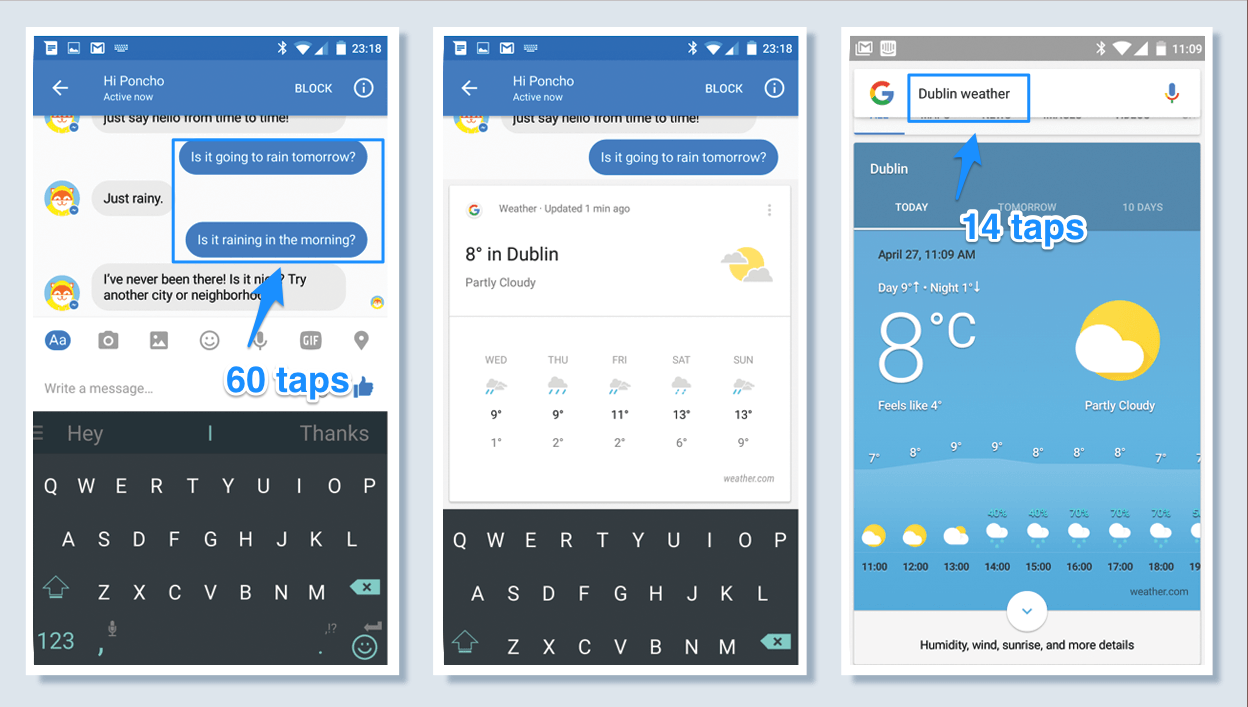
The Poncho chatbot makes finding out the weather more work than a simple Google Search. Image source: Intercom)
Take Poncho, a chatbot that tells you the weather. It takes around 60 taps to talk to Poncho and figure out if it will rain tomorrow. It takes 16 taps to accomplish the same thing in a simple Google search.
While Poncho is fun and cool, it doesn’t actually make it easier to find the weather than your native weather app. It’s a problem many chatbots suffer from—they’re fun and interesting, but don’t bring much to the table.
What’s Possible with Messaging Today
At Sonar, we know that messaging helps businesses build more intimate relationships with customers. But today, one of the biggest mistakes people make is thinking they can use bots to outsource 100% of customer communication. The bots simply aren’t up to the task—yet.
The hype around chatbots is only a small part of a much bigger trend: the fragmentation of communication across customer channels. A 2016 study shows that 65% of mobile users have used a messaging app to talk to a business. An even higher 76% have done so over SMS.
To really connect to your customers through messaging, you can’t just jump on the chatbot trend. You have to consider how messaging fits into your larger business strategy.
These are the three primary ways that businesses today use bots and humans to talk to their customers:
- Handoff the customer conversation from a bot to humans
- Switch requests between bot and human, based on the type of request
- Use human agents to ensure the bot runs reliably
Let’s take a look how companies today are implementing the bot-to-human handoff, and tips for how you can do the same.
Route Questions Between Bots and Humans
According to a report from Twilio, consumers prefer messaging to every other channel of customer support. Messaging is a low-stakes way to talk directly to a business, without getting stuck in a system of support tickets and automated responses.
Automated chatbots can tell consumers the time a business is open, or what a return policy is, but when it comes to offering real support, you need to have a human on the other line.
Let’s take a look at how the Radisson Blu Edwardian Hotel uses messaging to provide support to guests:
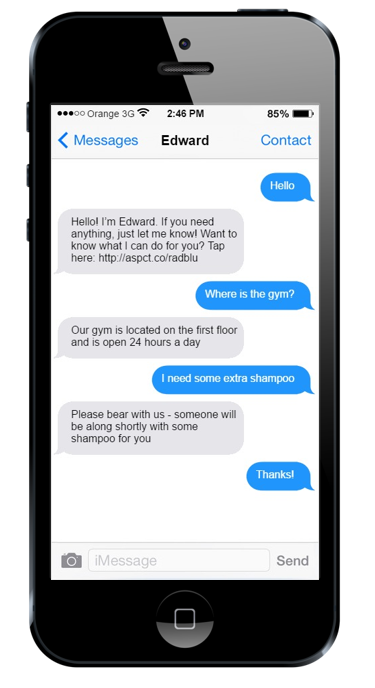
(The Edwardian Hotel’s Edward. Image source: Aspect)
- Guests send a question or request to Edward
- Edward answers common questions, like where the gym is, entirely on his own
- Edward routes customer requests, like room service, to hotel staff
Edward uses a rule-based system and Natural Language Understanding (NLU) to interpret what guests say to it, and respond appropriately. Within a closed system like hotel service, there simply isn’t enough data to use machine learning effectively. Tobials Goebel, part of the team behind Edward points out that “building a completely unsupervised learning bot can backfire quickly.”
Instead, the team mapped out the different types of requests Edward would receive, and built it to respond accordingly:
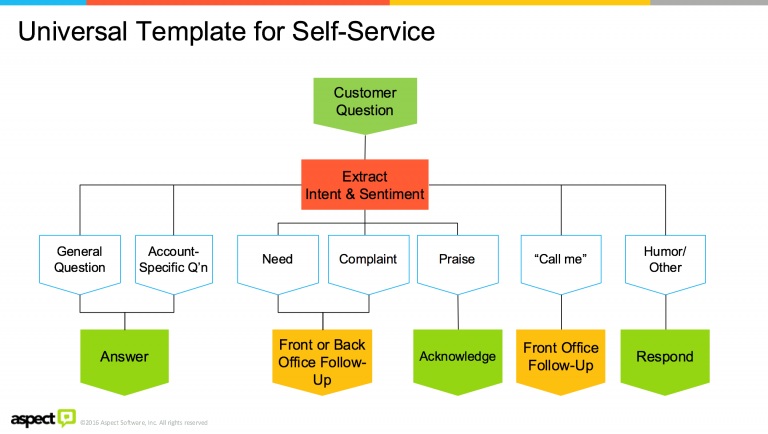
(Template for self-service applications. Source: Aspect)
For service-heavy industries like hospitality, messaging provides a huge opportunity for companies to provide instant support, while scaling down costs. Through Edward, guests are able to find information they need without having to search the hotel website or call down the front desk. It helps the Edwardian cut support costs, while providing better and faster service.
Use Humans to Robot-Proof Your Service
Automating tedious chores like booking flights or scheduling meetings are particularly good use-cases for bots—the only problem is that the bots aren’t smart enough yet. AI assistants like X.ai and Clara still rely on support agents to humanize bots and patch over their mistakes.
In an interview with Bloomberg, Clara CEO pointed out that she would rather build a more expensive, reliable service than a completely automated one that gave customers a bad experience.
Let’s take a look at how SnapTravel, a service that helps travelers book hotels accomplishes this.
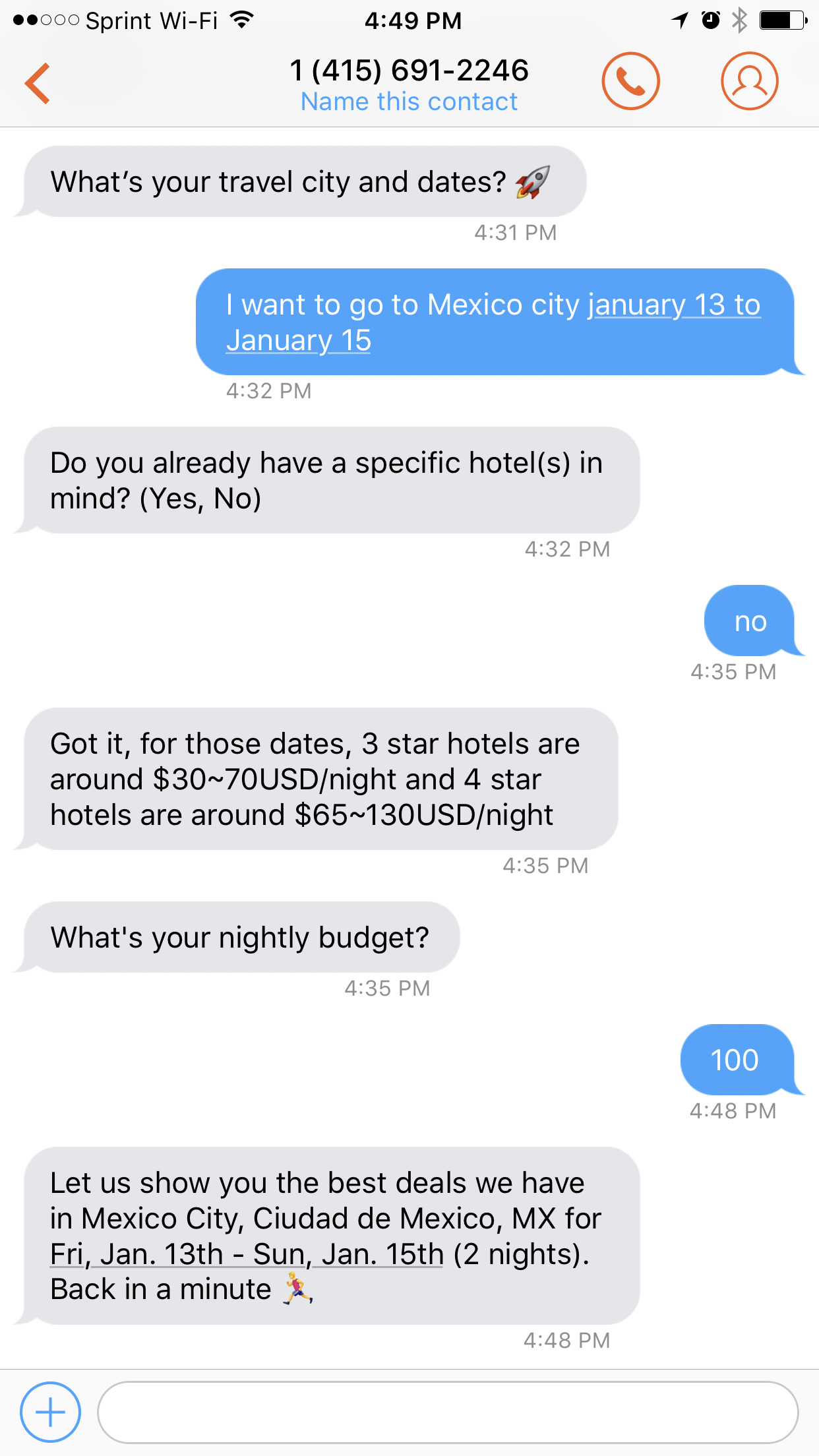
- SnapTravel’s bot asks for the customer’s travel dates, hotel preferences, and budget.
- The bot returns with a list of 3 hotels that match the pre-selected criteria.
- When the bot can’t process the conversation, a support agent is ready on the wings to step in.
- Each travel booking is approved by a human agent.
SnapTravel describes itself as a “half-bot half-human service.” Because booking a hotel is a pretty cut and dry process, SnapTravel can rely on bots to power a big chunk of the conversation with customers. But faced with more ambiguous questions, the service falls back onto human support representatives.
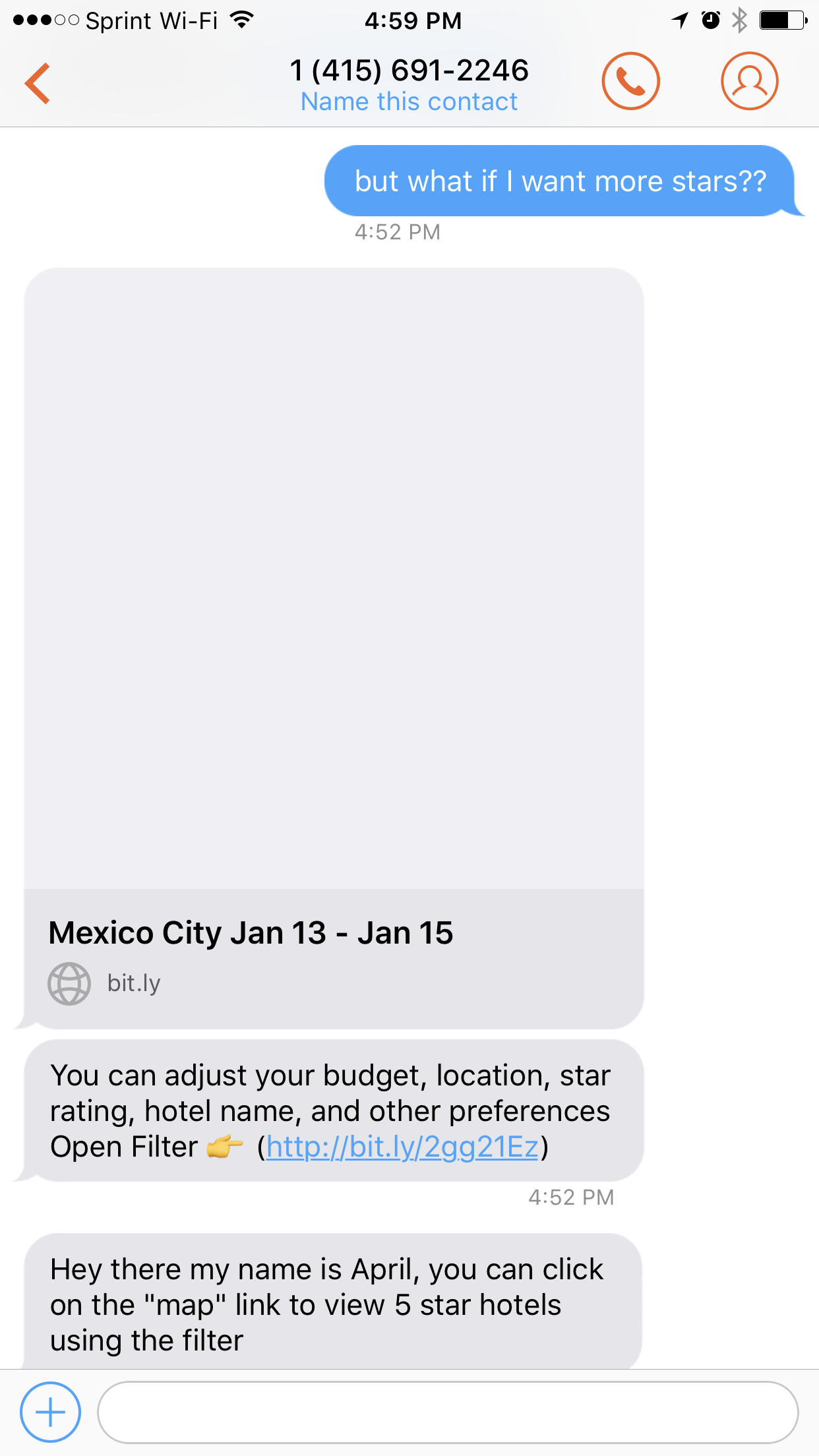
April steps in to the rescue!
It’s a smart business model. By providing it’s service across SMS, Facebook Messenger, and Slack, SnapTravel creates a low-friction point of entry for customers who don’t need a dedicated traveling app. Creating a bot allows the company to scale efficiently, while human agents ensure that the service works reliably.
Bots Are the Gateway to Messaging
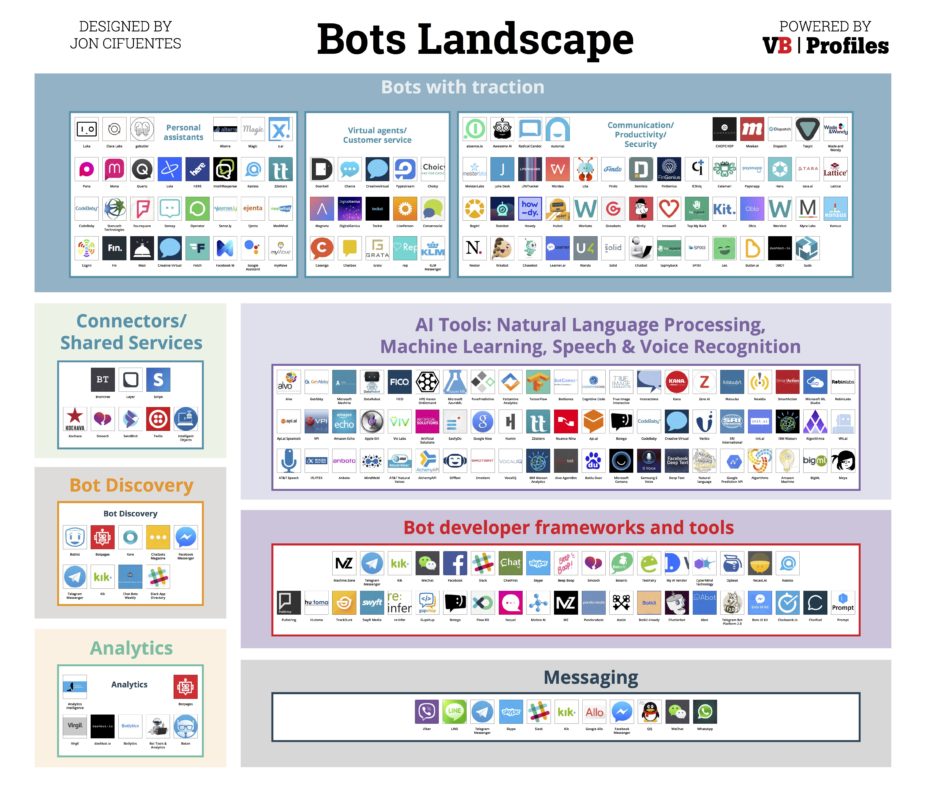
(VentureBeat’s Bots Landscape infographic shows 170+ companies developing bots with $4 billion in total funding. image source: VentureBeat)
There are now over 30,000 chatbots on Facebook Messenger alone. The bot landscape is filling up with bots that tell you the weather, schedule meetings, and manage your email. Chatbots offer an exciting vision of the future where AI and natural language processing allow businesses to automate personalized interaction with customers.
The truth is, we’re not quite there yet.
At Sonar, we believe that chat is the interface of the future—we built our business around it. But what we’ve seen day in and day out is that in order for businesses to really succeed on chat, they need a hybrid. They need to nail down the bot to human handoff.